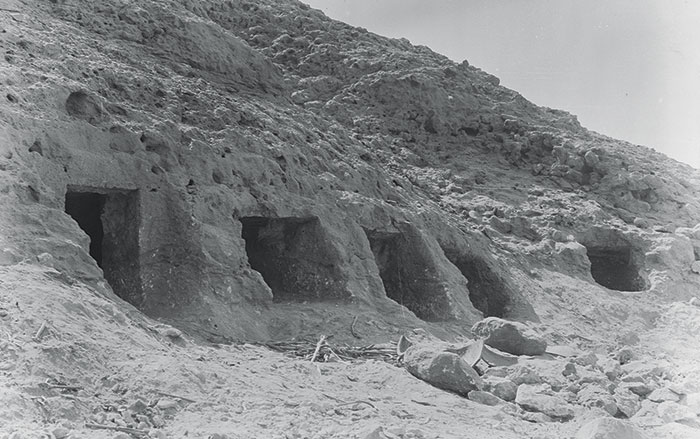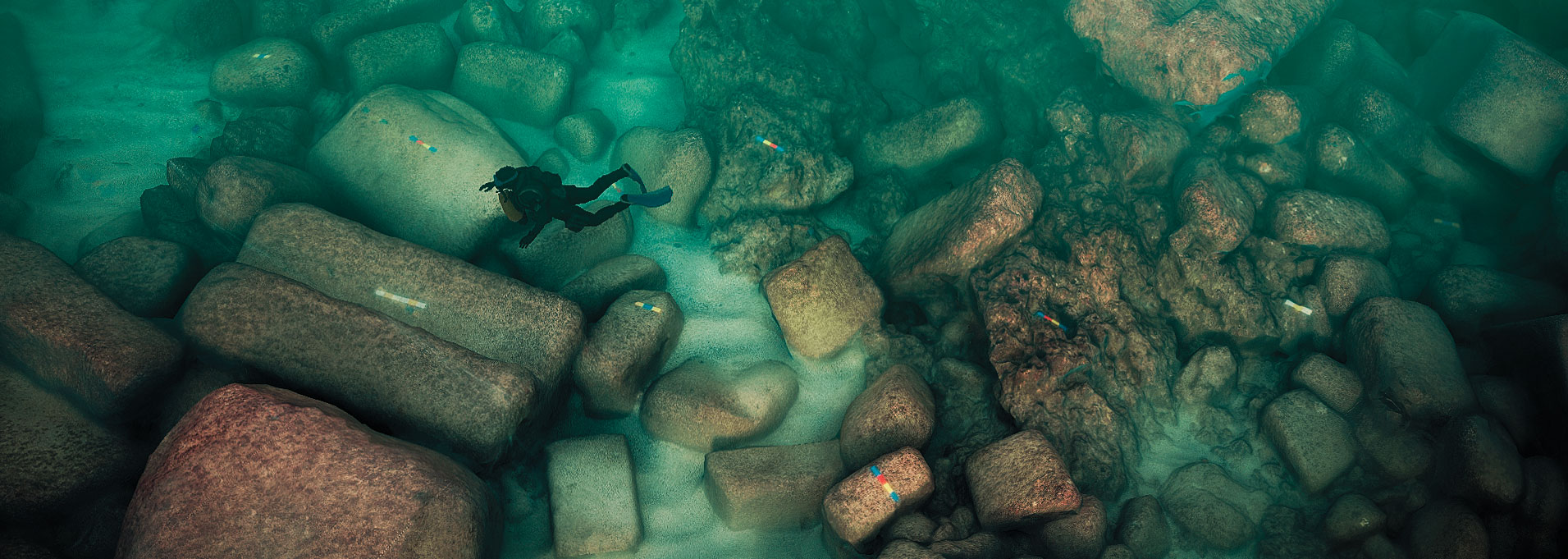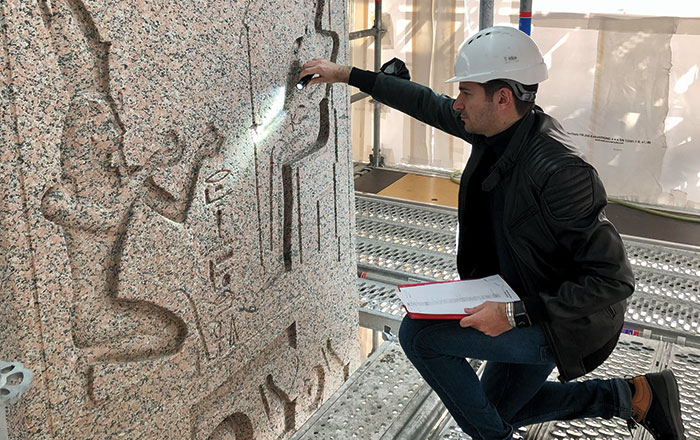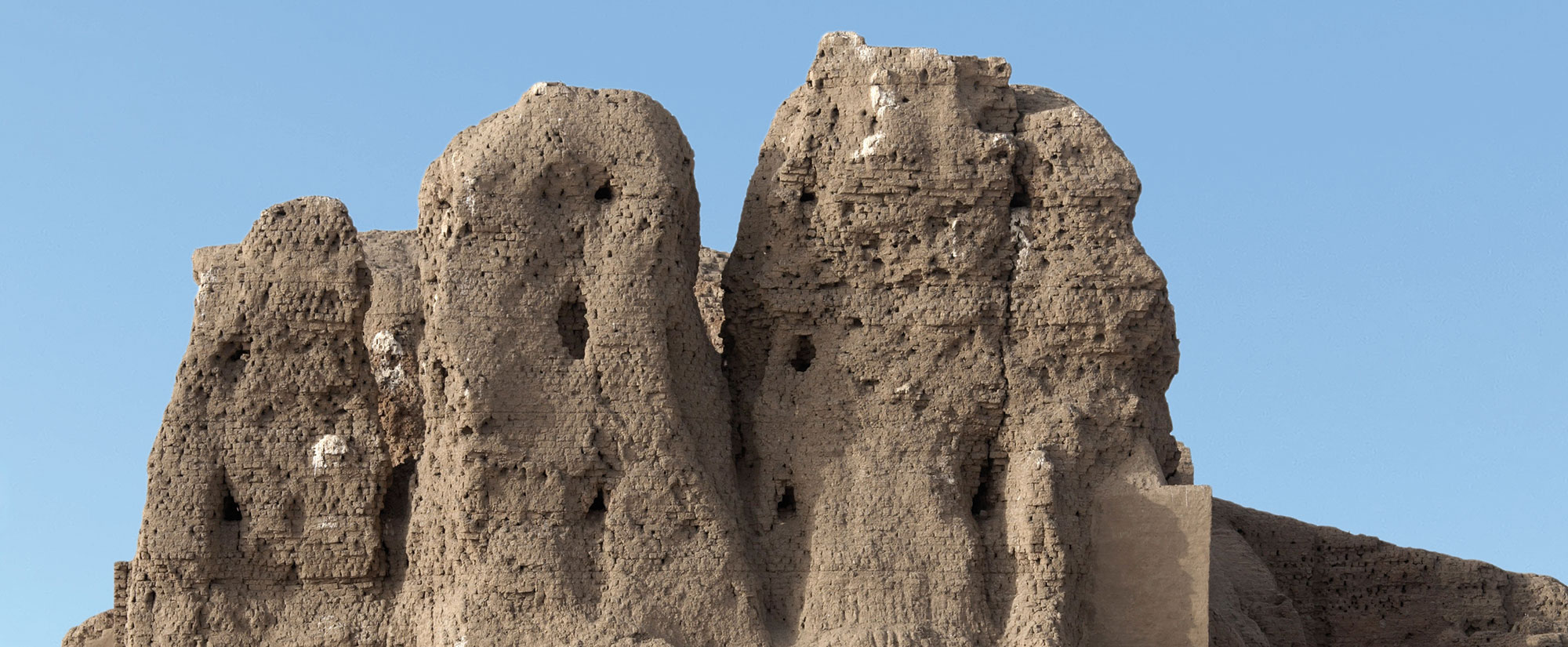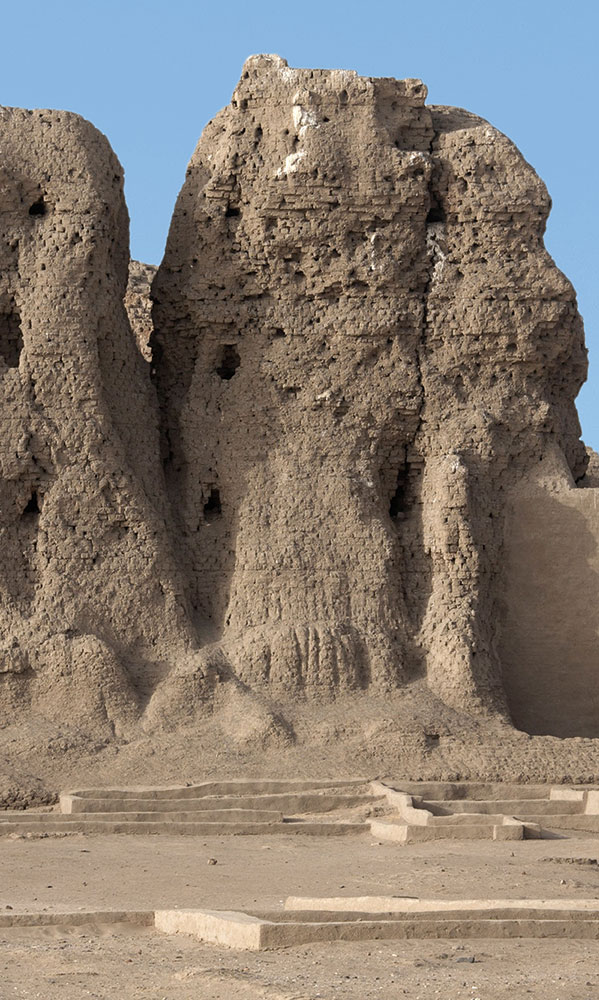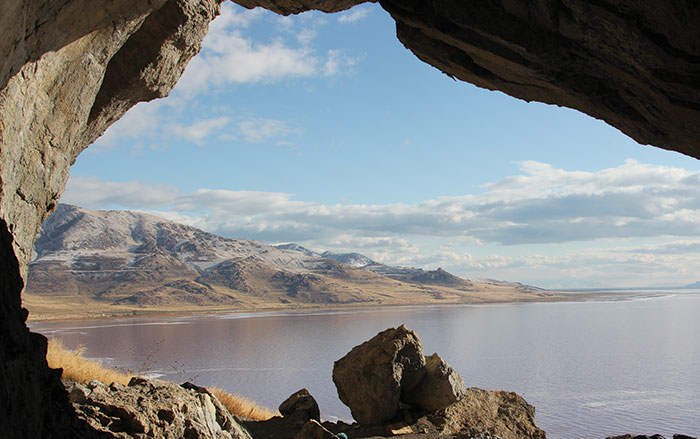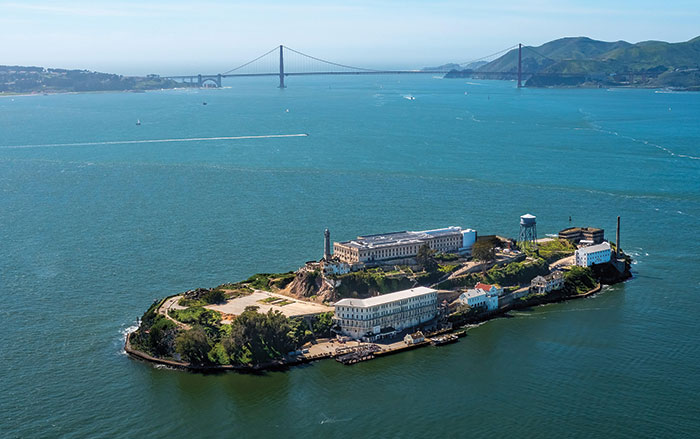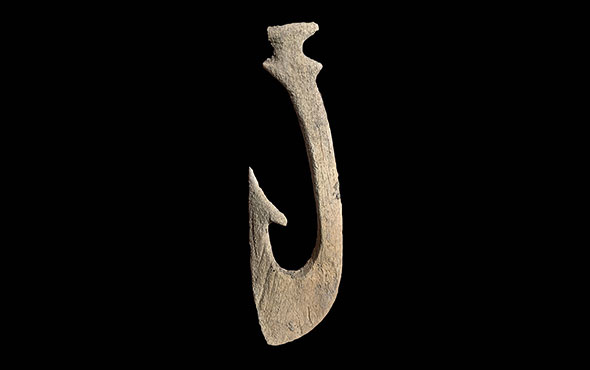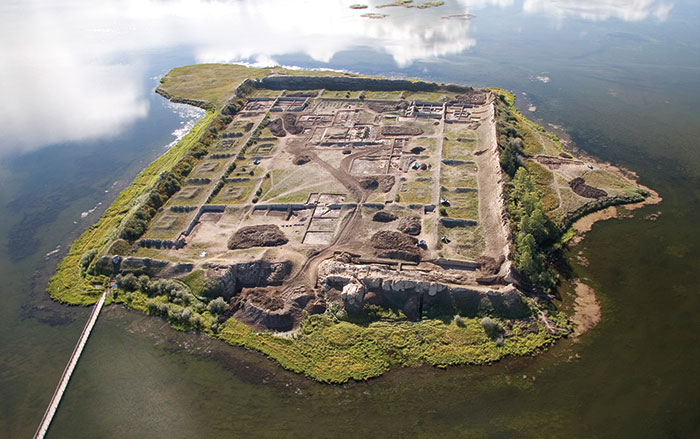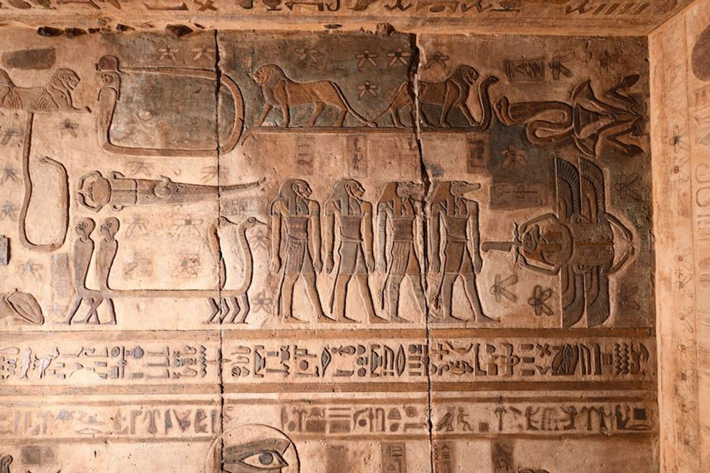
TÜBINGEN, GERMANY—According to a statement released by the University of Tübingen, a team of Egyptian and German researchers has removed layers of soot and bird excrement from the 2,000-year-old decorations in the surviving pronaos, or vestibule, at the Temple of Esna. The well-preserved structure survived because it had been incorporated over the centuries into the middle of the modern city of Esna, which is located on the west bank of the Nile River in Upper Egypt. Scholars estimate the reliefs and inscriptions, including an astronomical ceiling, were completed over a period of 200 years. Built in front of the original temple structure by Roman Emperor Claudius between A.D. 41 and 54, the sandstone pronaos measures 120 feet long, 65 feet wide, and 50 feet tall. Twenty-four columns support its roof, while the capitals of 18 freestanding columns are decorated with plant motifs. Team member Christian Leitz explained that the restoration work has revealed previously unknown inscriptions that had been written in ink, rather than chiseled into the stone, including the names of the Egyptian constellations depicted on the ancient ceiling. To read about the sacred site of Heliopolis on the Nile, go to "Egypt's Eternal City."


